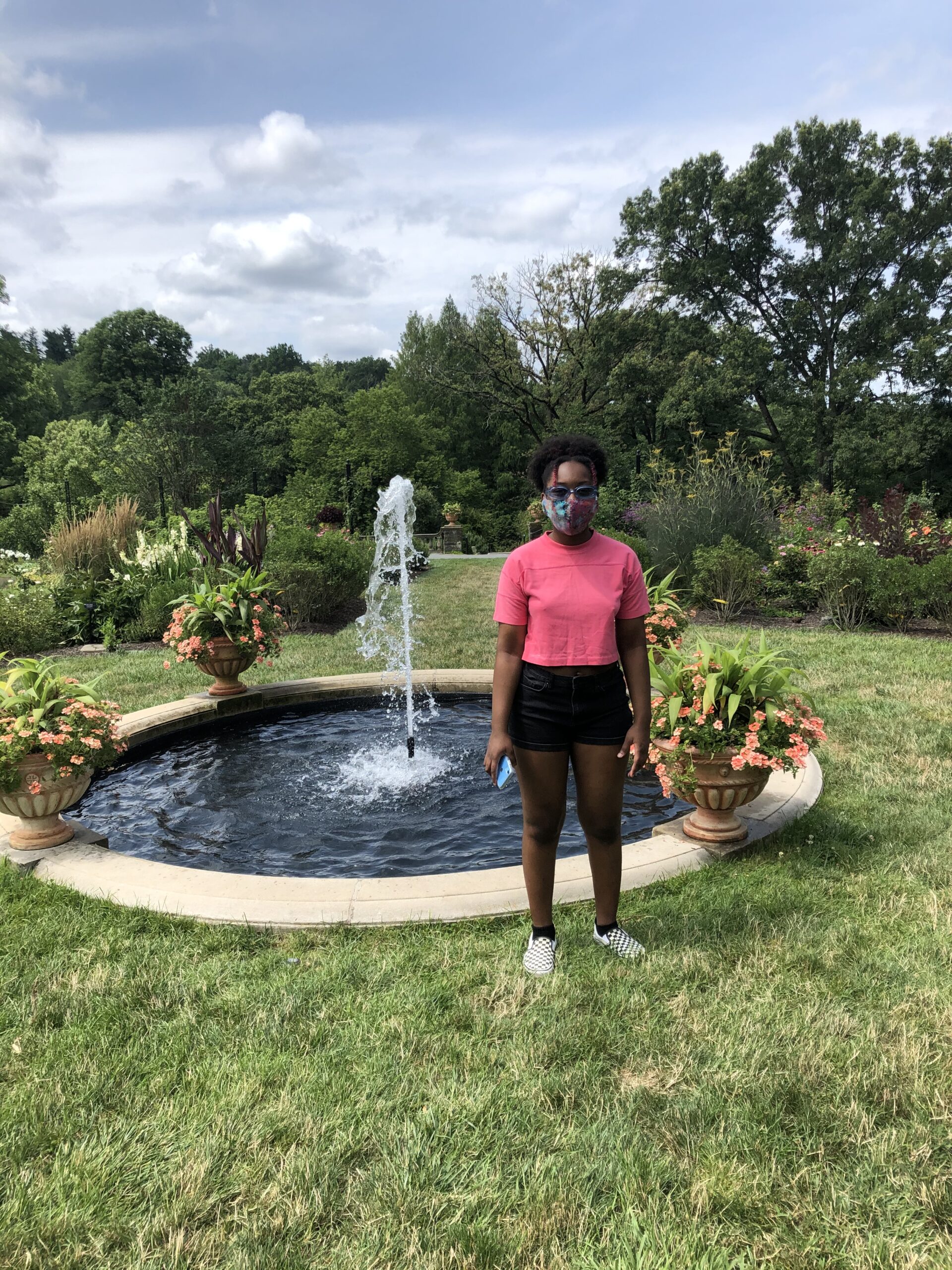Out and About in Philly

The Basics
Location: 100 D. Northwestern Avenue, Philadelphia 19118
Parking on grounds; could be reached from a bus stop by a short walk from Germantown and Northwestern Avenues
Open daily; closed for a few major holidays
Winter Hours: 10-4; summer hours are longer
Pandemic restrictions: Reservations required to limit occupancy. Café and all indoor spaces are closed, although there are places around the grounds where you can picnic. Masks required.
Cost:
Adults: $20; January and February, $12
Seniors: $18; January and February, $11
Children 3-17: $10; January and February $6
With PA Access card, prices are greatly reduced.
I have found it much more cost effective to buy an annual family membership. For $120, my membership includes 2 adults and 4 grandchildren, and some guest passes. It also includes a discount on the gift store and café, and on classes and summer camp. I go many times per year, sometimes with grandchildren, sometimes with a friend, sometimes alone to walk.
Much more information on the website: https://morrisarboretum.org
Highlights
The Arboretum is 92 acres and full of things to do even in the winter in a pandemic! This is a great place to take a walk. There are paved paths throughout making use of a stroller or wheelchair easy. There are many nooks and crannies to explore, secluded places to sit, and beauty all around.
Tree Adventure and Out on a Limb:
Get a bird’s eye view of the forest from 50 feet up, perched on a canopy walk high above ground level. Sit or play in a huge hammock-like net where you can look down to the ground far below through the rope netting. Enter a Bird’s Nest and sit on giant robins’ eggs. Kids will play here until you force them to leave!

Swan and Duck Pond:
Beautiful and fun to watch, especially at feeding time.
Sculptures and Fountains:
These are all over the grounds; you will not be able to explore them all in a visit. Children’s favorites are:
Stickwork Sculpture by Patrick Dougherty—There are a number of these side by side- enough to play hide and seek.

The Frog—this big bullfrog is partially hidden by tress and grasses—it’s an adventure just to find it.

The Log Cabin:
Closed right now due to Covid but you can still sit on the porch. When it opens there are Lincoln Logs inside to play with and artifacts from the past to look at. In the summer there’s a working pump to play with.

The Garden Railway:
The Garden Railway is open twice a year—for about 5-6 weeks in November and December, when all the trains and the surrounding building replicas are holiday decorated, and again in the spring, when often there is a fairy tale theme. There are about a dozen trains all running at the same time. The display and buildings are all made of natural materials – bark, leaves, twigs, hollow logs, mosses, acorns, dried flowers, seeds and stones – to form a perfectly proportioned miniature landscape complete with small streams. Each building, while an exact replica of the original, is unique in its design. Philadelphia-area landmarks such as a masterpiece replica of Independence Hall are made using pinecone seeds for shingles, acorns as finials and twigs as downspouts.
Special Events:
There are many but a favorite in my family is the scarecrow walk in October. Various garden clubs design scarecrows based on a theme—they are amazing! 
Brief History
Morris Arboretum of the University of Pennsylvania began in 1887 as Compton, the summer home of John and Lydia Morris, brother and sister. The land the Morrises purchased in Chestnut Hill was barren, with poor soil that drained too quickly; but with diligent care they surrounded their home with a landscape and plant collection devoted to beauty and knowledge.
John was a noted plantsman and community leader who explored the new world of knowledge available to Victorians. John and Lydia shared a love of history and art, and established a tradition of placing sculpture in the garden that continues today. The Morrises were active in civic affairs and preservation, and believed in the power of education
John and Lydia Morris laid plans for a school and laboratory at Compton devoted to horticulture and botany. Through the stewardship and vision of the Quaker family, Compton became the Morris Arboretum of the University of Pennsylvania in 1932. Listed on The National Register of Historic Places, it is an interdisciplinary resource center for the University, and is recognized as the official arboretum of the Commonwealth of Pennsylvania. Science, art, and humanities are pursued through a variety of research, teaching, and outreach programs that link the Arboretum to a worldwide effort to nurture the earth’s forests, fields and landscapes.
Jamie says:
If you were taking a friend what would you take her to first? I’d take her to the Rose Garden. It’s so beautiful there and tucked away in a corner is a circular stone stairway built around a fountain. In the middle of the stairway there’s a stone bench. It’s a great place to sit and eat a snack.

What’s your favorite time of year at Morris? Winter, because I love the Holiday Railway.
Have you learned anything about history at Morris? There’s an old root cellar and cold storage area called The Springhouse for dairy products that’s built above an underground spring. They used to churn butter there also. There are signs that explain how it works.

Leave A Comment